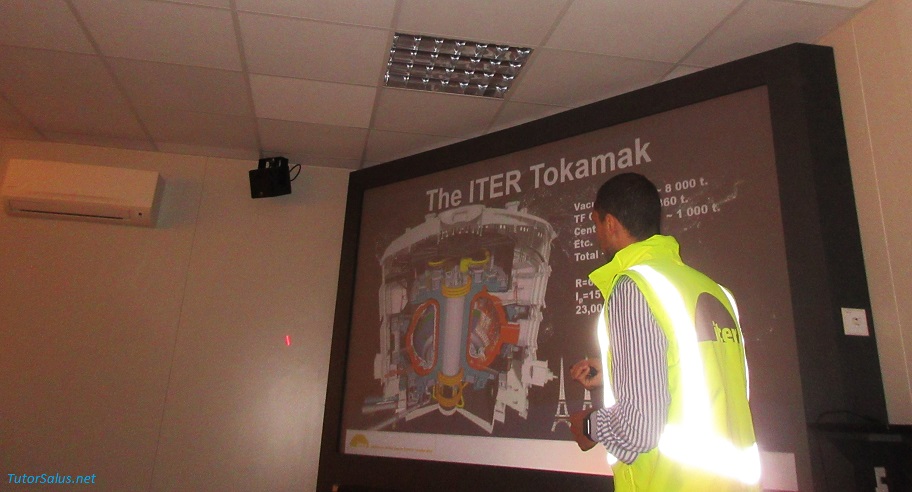Divide and unite.

In the picture : the Introductory Room. ITER – which in Latin language is translated with ‘way, journey’ – is located at Saint-Paul-lez-Durance / Cadarache, France : it is to date the only machine in the world, whose size and equipments (currently the civil works are at 85% of realization, the assembly stages started in 2020) allow you to explore the unknown territories of nuclear fusion which replies the reaction taking place on the Sun, so enabling a non-fossil energy production and with a minimum presence of radioactive waste. Through the fusion machine ‘Tokamak’, a hydrogen plasma is brought up to a temperature of 150 millions degrees C at which the fusion reactions can take place. ITER’s actors are : China, European Union, India, Japan, South Korea, Russia, U.S.A. : more than 500 manufacturing Companies from different Countries are active on the site. Since 2022 the general manager of ITER is the Italian engineer Pietro Barabaschi/ www.iter.org
Maybe the two alternative procedures to treat the atom nucleus for production purposes will live together for a long time : the one, through a seemingly convenient division of the nucleus which it counterbalances the activation of complex and very expensive security systems; the other one, through a hard-working trigger of the fusion reaction, with instead rapid and cheap security systems.
The stated goal for both the procedures which already prepare this coexistence, is to accelerate both knowledge and competence about materials which so far didn’t proceed readily.
Now the chance of a fact-finding mission organized by Cise2007[1] in the largest site in the world where a state-of-the-art nuclear fusion reactor is under construction, opened as a matter of facts to an informal and educational meeting among senior technical engineers as pupils – on one side - who came up according the theory of a productive effectiveness of nucleus division and, on the other side, junior technical engineers as teachers because currently applying to the research of energy production deriving from union – better : fusion – of hydrogen nuclei.
The meeting first pointed out the talent of attention in listening by the Italian technical engineer teacher – born in 1991 – who was able to grasp the prudent climate of a generation of Italian technicians grown up cultivating at University first the energy production from nuclear source, and then themselves updated on its decommissioning in favour of traditional energies already financed in the previous years[2].
Right the applied research has been able to solve some knots in favour of an advance in the feasibility of a nuclear fusion reactor which can prove much less invasive than the traditional nuclear fission reactor, i.e. through the division of nuclei.
The young teaching also pointed out the excellent capacities of a remote work which has been going on for decades now and which involves technicians from different - not always politically related - Countries, called to a stable agreement for scientific purposes, and to a de-facto partnership. The industriousness of an interpersonal afflatus which allows collaboration even if without the traditional attendance of classrooms and laboratories, was severely tested in the years, and well refined in order to make it sufficient just to see and hear your colleague through the monitor which, we felt, could have only tired the whole communication… ITER experience overcame previous beliefs, right going through unexpectedly events, like the pandemic Covid19 and - unfortunately - also sudden terrible wars that subjected to a fatiguing ‘passivation’[3] one’s work, when it is inextricably substantiated on both individual and social application.
An experience that remains an excellent testimony for those who prefer strenuously resist the opportunity of ‘distance learning’.
Marina Bilotta Membretti / Cernusco sul Naviglio – June 12, 2023
[1] ‘Centro italiano per la Sostenibilità e l’Energia’, in the short form CISE2007.
[2] ‘Gli anni dell’atomo. Storia dell’industria elettronucleare in Italia’, di Flavio Parozzi (2021), ed. ‘Biblion’.
[3] The ‘passivation’ is an electrochemical phenomenon which reduces or stops the corrosion reaction of metallic materials corrosion to which they are exposed.